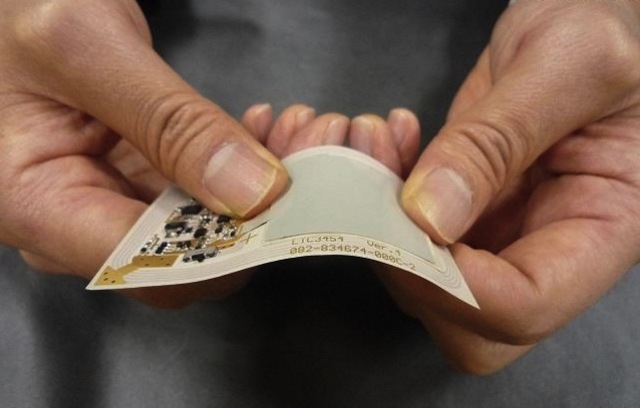It is not new for NEC because previously they had released so many unique electronic devices. Recently they have released a new organic radical battery and it is an utra-thin, 0.3mm thick that is compatible within standard IC cards of 0.76mm thickness. ORB is a reachargeable battery and this battery’s main advantage is flexibility, higher power output and faster recharging speeds.
If you read NEC press release then you will learn more details about this Organic Radical Battery.
Press Release
Tokyo, March 5, 2012 – NEC Corporation (NEC; TSE: 6701) announced today the development of an ultra-thin, 0.3mm thick, organic radical battery (ORB) that is compatible within standard IC cards of 0.76mm thickness.
The adoption of these ultra-thin ORBs featuring greater flexibility, higher power output and faster recharging speeds than existing rechargeable batteries, including lithium-ion batteries, is expected to enable advanced new functions in IC cards, electronic paper and other technologies.
Conventional ORBs of 0.7mm thickness are difficult for IC cards of standard 0.76mm thickness to adopt.
These new, 0.3mm ORBs are less than half the thickness of existing units, a size reduction that was accomplished by using printing technologies to integrate circuit boards with batteries. As a result, IC cards embedded with these batteries can be used for a wide range of functions, including displays, transmission and advanced encryption processing.
Key features of this newly developed organic radical battery are as follows:
- Ultra-thin 0.3mm thickness realized through integration with circuit boards
These batteries are externally wrapped with a polymer film of 0.05mm thickness that may also be used with circuit boards. Moreover, the 0.3mm thickness is achieved through printing technologies that enable negative electrodes to be directly formed on circuit boards. This is created in combination with separators (insulation) on the negative electrodes and laminated radical polymer cathodes. Conventional batteries use an aluminum laminate as external material that is 0.2mm thick.
Battery-equipped circuit boards can also be outfitted with small electronic components, such as antennae. Circuit boards that are equipped with these batteries and electronic components enable the production of standard size IC cards with built-in batteries.
- Demonstrates both high power output and resistance to repeated charging and discharging
Battery prototypes feature a 0.3mm edge, 3cm thickness, 3mAh capacity and 5kW / high-output power density per unit volume. Prototypes are capable of 2,000 display screen updates, 360 consecutive flash firings and 35 location transmissions on a single charge. Furthermore, charge-discharge tests indicate that the batteries maintain 75% of their initial charge-discharge capacity after 500 cycles, equivalent to the performance of lithium-ion batteries for mobile phones.
Source: NEC
[ttjad keyword=”electronic”]


